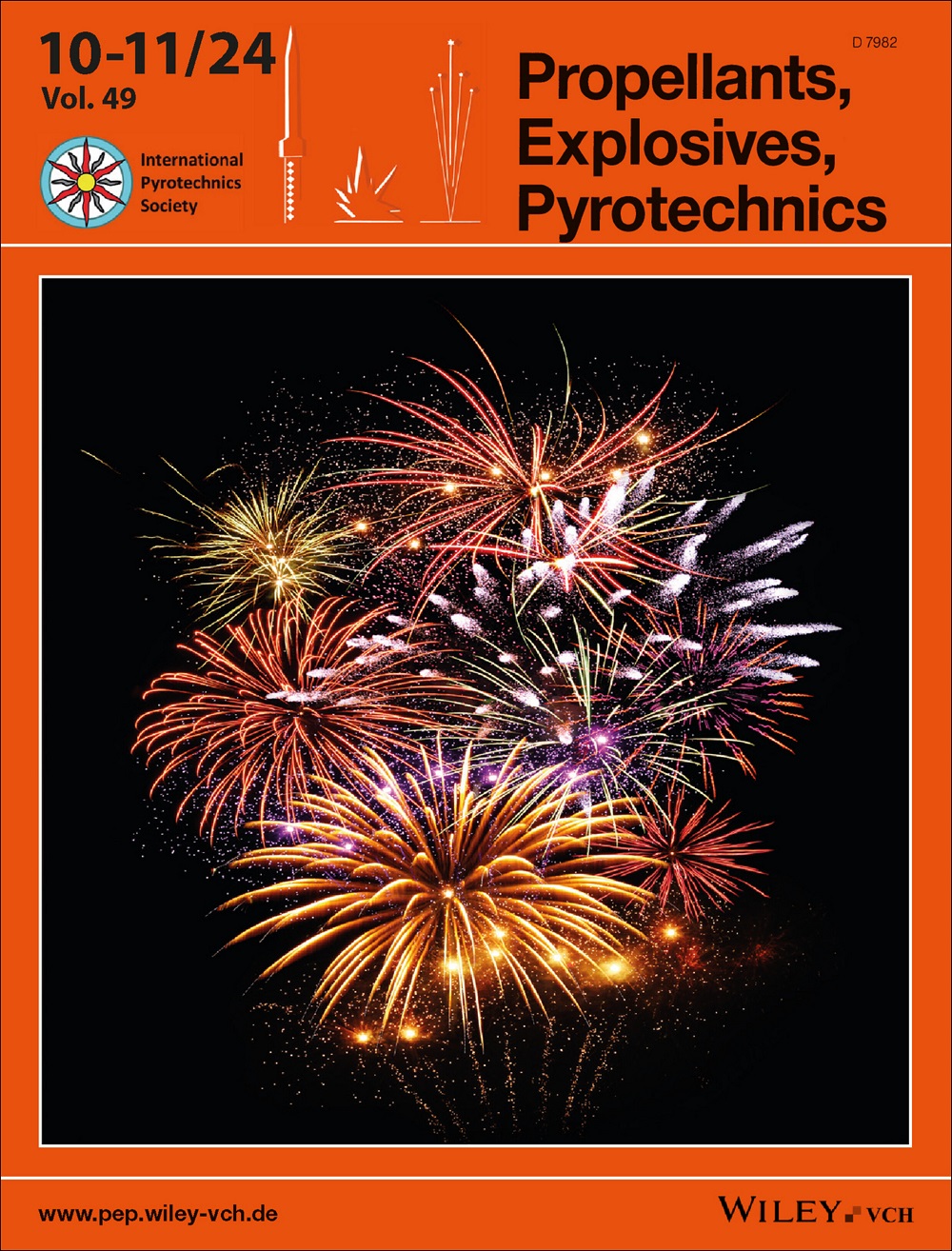Analysis of thermal stability for slow burning propellant based on isothermal testing: Self‐accelerating decomposition temperature (SADT) calculation and validation
IF 2
4区 工程技术
Q3 CHEMISTRY, APPLIED
引用次数: 0
Abstract
Burning rate suppressants (BRSs) refer to a series of additives that reduce the burning rate of propellants, crucial for achieving sustained and stable thrust. This research focuses on assessing the impact of ammonium sulfate and ammonium oxalate on thermal stability and their potential as BRSs. Due to the stronger inhibitory effect of ammonium sulfate on the AP proton transfer process, the activation energy of propellant's first decomposition can be increased from 94.71 kJ mol基于等温测试的慢速燃烧推进剂热稳定性分析:自加速分解温度 (SADT) 计算与验证
燃烧速率抑制剂(BRSs)是指一系列能够降低推进剂燃烧速率的添加剂,这对实现持续稳定的推力至关重要。本研究的重点是评估硫酸铵和草酸铵对热稳定性的影响及其作为燃烧速率抑制剂的潜力。由于硫酸铵对 AP 质子转移过程有较强的抑制作用,在添加量为 3% 的情况下,推进剂第一次分解的活化能可从 94.71 kJ mol-1 增加到 129.69 kJ mol-1。根据塞梅诺夫模型,计算了自加速分解温度(TSADT),并通过 7 天等温试验进行了验证。加入硫酸铵和草酸铵后,自加速分解温度分别从 197.31 ℃ 升至 220.90 ℃ 和 215.06 ℃,与实验结果的偏差小于 4%。在所测试的推进剂中,含有硫酸铵的推进剂在 220-240 °C 等温储存 7 天后,反应延迟时间延长(44.43-33.60 h),过热温度降低(222.8-445.5 °C),质量损失率降低(33.0-71.4 %)。热分析与等温测试之间的一致性强调了活化能对热稳定性的重要影响。
本文章由计算机程序翻译,如有差异,请以英文原文为准。
求助全文
约1分钟内获得全文
求助全文
来源期刊

Propellants, Explosives, Pyrotechnics
工程技术-工程:化工
CiteScore
4.20
自引率
16.70%
发文量
235
审稿时长
2.7 months
期刊介绍:
Propellants, Explosives, Pyrotechnics (PEP) is an international, peer-reviewed journal containing Full Papers, Short Communications, critical Reviews, as well as details of forthcoming meetings and book reviews concerned with the research, development and production in relation to propellants, explosives, and pyrotechnics for all applications. Being the official journal of the International Pyrotechnics Society, PEP is a vital medium and the state-of-the-art forum for the exchange of science and technology in energetic materials. PEP is published 12 times a year.
PEP is devoted to advancing the science, technology and engineering elements in the storage and manipulation of chemical energy, specifically in propellants, explosives and pyrotechnics. Articles should provide scientific context, articulate impact, and be generally applicable to the energetic materials and wider scientific community. PEP is not a defense journal and does not feature the weaponization of materials and related systems or include information that would aid in the development or utilization of improvised explosive systems, e.g., synthesis routes to terrorist explosives.
文献相关原料
公司名称
产品信息
阿拉丁
ammonium perchlorate
 求助内容:
求助内容: 应助结果提醒方式:
应助结果提醒方式:


